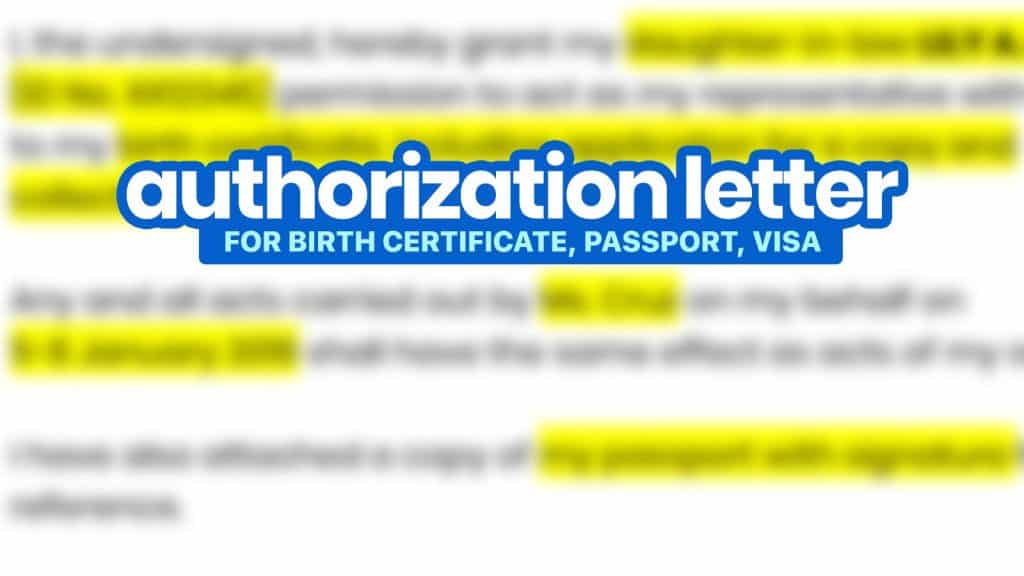I’m the only one in the family who lives in Manila. Whenever there’s a chore that needs to be done in the capital, by default, I am the one to do it. Be it applying for an NSO/PSA birth certificate or DSWD travel clearance or claiming a visa or passport, the task falls on my lap whether I like it or not.
One of the things that I always find myself writing is an authorization letter. If you’re not familiar with it, it’s a document that basically grants you permission to do something on behalf of someone else who can’t do it themselves. Usually it’s for something very simple like collecting an item or securing a copy of a document. For more extremely important tasks, sensitive situations, or powerful privileges, you may need something more binding like an affidavit or power of attorney. But if it’s a simple undertaking, often an authorization letter will suffice.
SAMPLE AUTHORIZATION LETTERS
Because I always do little errands for family members, I have saved a number of authorization letter templates for various occasions. And I’m sharing them with you. These are Word files (.docx) so you can easily edit them. Just replace the highlighted texts with your own information.
- For Applying for a Copy of Birth Certificate. Although an online option is available, applying in person is much faster. Download here!
- For Collecting Passport. Personal appearance is required when applying for a passport but not when claiming it after it’s processed. You can also use this for claiming passport from embassy or travel agency after visa application. Download here!
- For Applying for DSWD Travel Clearance. If someone other than the minor’s parent or legal guardian is applying, an authorization letter from parents is required. Download here!
HOW TO WRITE AN AUTHORIZATION LETTER
For the purpose of this post, let’s call the two parties REPRESENTATIVE and REQUESTER. The requester is the one who is asking for a favor and who signs the letter. The representative is the one doing the task on behalf of the requester.
These are the information bits that your letter needs to have.
- Heading. Usually it’s just the date when you wrote the letter. If you want to make it more formal or professional, you can add a return address.
- Name of the representative. Write their full name. You can also add how you’re related to them.
- ID number. Sometimes, establishments look for an ID number in order as another measure of confirming that the holder is indeed the person specified in the letter.
- The task. Specify what exactly you want your representative to do on your behalf. If there are multiple activities that you need them to do, you can list them down.
- Effectivity dates of the authorization. For your own protection, it’s best to have a specific period of time that the letter can be used.
- Identification document. Usually, establishments require that a copy of an ID of the person be presented. Often, the copy also needs to be signed. This is another way of making sure that the authorization letter is authentic.
- Contact number of the requester. Just in case the establishment has inquiries or needs further confirmation, provide your contact number. Mobile number is usually enough. But you can add your landline and email too, for good measure.
- Signature of requester. Printed name, relationship with the representative, and signature. You can also add other forms of identification.
Digital signatures are often not accepted. Fortunately, I always come home once or twice a month so I get to have my family members sign the letter. When there’s no opportunity to come home, I would just email them the letter, have them print it out, sign it, and send it back to me via courier.
2️⃣0️⃣1️⃣8️⃣ • 1️⃣1️⃣ • 2️⃣0️⃣
